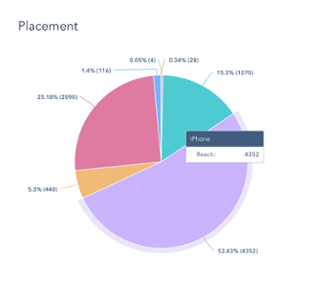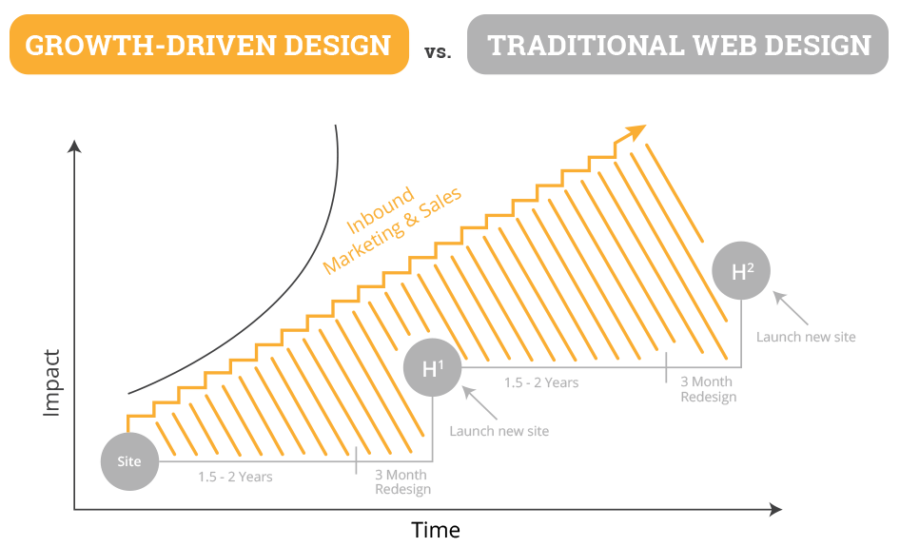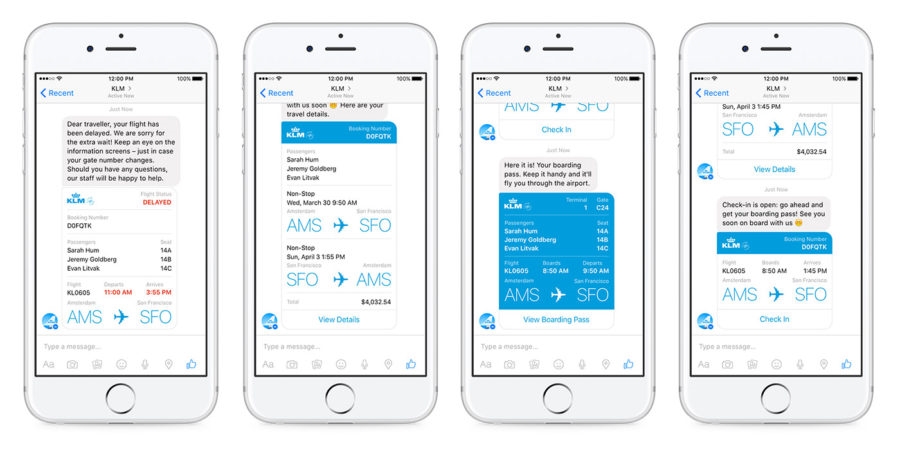— December 5, 2017
It’s that time of year again, time to start analyzing successes, owning up to the failures, and looking ahead to your 2018 plans. While it can be easy to keep your marketing engine running on the status quo, in today’s marketing world, it’s important to look at the new tools, technologies, and features that are available to make sure you are doing everything to be successful and continue to grow, learn and thrive.
As you look ahead to the coming year, here are ten things that you should take into consideration when you start crafting your 2018 digital marketing plan.
- Lean into Your High-Quality Content
- Create Content Pillars and Topic Clusters
- Launch a Growth-Driven Website Plan
- Ramp Up Your Facebook Marketing
- Test Live Chat and Chatbots
- Increase Your Video Marketing Budget
- Leverage Data-Driven Marketing
- Utilize Storytelling to Establish a Deeper Connection
- Get Specific with Micro-Targeting
- Use Website Personalization to Deliver Relevant Content
Let’s take a deeper look at each one of these potential tactics and how you might deploy them in your marketing plan this year.
1. Lean into Your High-Quality Content
The buyer’s journey has changed so much from where it was just 10 years ago — and content is at the heart of it. With access to a world full of information, buyers have the opportunity to search, explore, research, and compare not only from the comfort of their own home but right from the palm of their hands.
Just think about what that means! Let’s say that you own a small hardware store. A customer could be standing in the middle of your store, not finding what they need. But instead of asking a service rep, they take out their phone and search “best ways to fix a broken door handle.” They are led to an article that walks them through the process of fixing a door handle and at the bottom of the article is a beautiful call-to-action that says “Click Here to Buy Everything You Need to Fix Your Door Handle. (Oh, and you can pick it up at the store today).” Just a few clicks and you have lost that customer.
The Internet has become the world’s most trusted sales representative and if you are not part of that conversation, you’re missing out.
Yet there are now enough companies in the conversation to create another concern: keyword-friendly content that doesn’t really say much very much beyond the obvious. Google reacted to the massive scale of mediocre content by adding quality filters to its algorithms — trying to reward the kinds of pieces that searchers are looking for in the first place. For example, if someone finds your link on the top of the first page on Google, but, instantly, clicks back to the search result page, that reflects poorly on the quality of your site.
For some companies, this might mean slowing down the content train and starting to find the right cadence that allows you to create better content. However, there are a lot of companies out there that STILL haven’t made use of a regular, SEO-centric content schedule. If that’s your company, it’s essential that you add content creating to your 2018 marketing plans.
What to include in your marketing plan:
- An SEO-oriented content plan focused on quality over quantity
- In-depth content that helps your potential customers with their buying decisions (see Content Pillars and Topic Clusters)
- Clear, accessible pricing information
2. Create Content Pillars and Topic Clusters
If you aren’t familiar with the idea of Content Pillars and Topic Clusters, I’d suggest you start with this overview post.
Another major shift in Google’s search algorithm centers around the idea of grouping search topics together to help better account for the searcher’s intent. As consumers, our computers aren’t the only device we use for surfing the web anymore. We have tablets, phones, voice search, and voice assistants, and our search habits are slightly different on each device.
Over the years, as we’ve created content-rich websites, we haven’t done a great job grouping our content together in a meaningful way (because we didn’t have to). But that’s all changing. It’s now more essential than ever to spend time combing through the content on your website and putting together Topic Clusters that allow search engines to better understand the flow between the different pieces of content on your site.
This video from HubSpot is the perfect visual representation of this idea.
What to Include in Your Plan:
- Identifying high-level topics (keywords) that your company specializes in
- Mapping out your existing content so that similar topics and ideas are grouped together
- Expanding that content library so that you can thoroughly answer customer questions
3. Launch a Growth-Driven Website Plan
Historically, the standard practice when it comes to websites is to do a complete redesign every 2-4 years or so, depending on your industry. This is for a number of reasons:
- Stay up-to-date with changes in technology, web standards, search algorithms, etc.
- Refresh the look and feel to keep visitors engaged with your website.
- Do a content audit of pages that are underperforming.
- Update the UI/UX of your website to make it as user-friendly as possible.
However, there has been a shift in the website development world and many companies are now moving to a growth-driven design methodology.
Another thing that search engines favor is regularly updated websites because, often, the newest information is the best information. With that in mind, companies are shifting away from lengthy redesign projects to smaller, more iterative website design and development agreements.
This change allows marketers to test and measure what works best for their audience and double down on areas where they are having the most success.
What to add to your marketing plan:
- Evaluate your website against best practices, industry standards, and your competitors
- Research growth-driven website design
- Identify one area of your website that could use an update, refresh, or reorganization
- Consider having a website company do an audit of your site to identify potential growth areas
4. Ramp Up Your Facebook Marketing
The depth of Facebook goes far beyond simple social posting. While organic reach for pages has dipped as low as 2% of their audience, there is still a lot of traction to be gained from investing in this platform in 2018. Here are a few areas to consider:
Lead Ads: Facebook’s new advertising workflow allows you to direct paid traffic to a lead collection form without ever leaving the platform. The form integrates with a user’s information that is already stored on Facebook and reduces the friction from buyers. Plus, some marketing automation platforms, like HubSpot, directly integrate so that the leads are automatically funneled into your database.
Facebook Messenger: As of September 2017, Messenger now has 1.3 million active users, and the platform recently launched an update that allows Facebook Pages the ability to integrate Messenger in order to directly communicate with their audience.
Live Video: The introduction of Live Video on Facebook provides brands with a direct connection to their audience that has been hard to achieve with the declining organic reach. Video can be a key strategic ingredient for any company, but Facebook Live allows companies to create video directly on the Newsfeed. Since the platform is still relatively new, these posts are highly-favored and appear regularly for your page’s audience. If you haven’t started with Facebook Live, check out our simple guide for businesses.
Facebook Watch: If you are a seasoned content creator who is always looking for new places to curate your content, look no further than Facebook Watch. This Netflix and YouTube hybrid is brand new and will be a big part of Facebook’s content strategy in 2018.
What to add to your marketing plan:
- Diversify PPC campaigns with the use of Facebook Lead Ads
- Create a strategy for Facebook Messenger for better chat functionality with your audience
- Additional strategic video content specifically created for Facebook Live or Watch
5. Test Live Chat and Chatbots
Many companies have already made the move to a live chat or chatbot on their website. Just like when we go to the store, we like customer service reps to be available exactly when we want them, not a moment before or a moment after. While there’s a variety of different tools that have been out on the market for a while now, there is one change coming next year that will shift the marketplace.
Facebook is opening up the Messenger platform as a live chat that will be embeddable on any website. While this is still in beta, it’s definitely something to watch for in 2018. If you have a large following on Facebook or a lot of your customers are active Facebook users, sign up for early access to the beta now.
What to add to your marketing plan:
- Determine if a live chat or chatbot strategy is right for your business
- Research different chat technologies
- Implement a chat strategy including a process for responding to chat requests on your site
6. Increase Your Video Marketing Budgets
Videos tell the story of your business in a way that no other media on your website can. Like a window into the culture of your company, videos help develop trust with customers. However, a lot of companies see video strategy as a giant, expensive project that is not worth their time or money.
Video doesn’t have to be a giant, stressful, expensive endeavor.
With the right video production company or internal process, you can create video content that can help drive visits, leads, and, most importantly, customers.
“58% of consumers consider companies that produce video content to be more trustworthy.” (source)
No matter what your video budget was for 2017, you should plan to increase it for 2018. If you didn’t spend any money on video last year, now is the right time to start. Here are some considerations and templates to help you get started with video marketing.
What to add to your marketing plan:
- Solidifying a video marketing strategy
- Creating more video than 2017 — that could be live, webcam, internally, or professionally produced
7. Leverage Data-Driven Marketing

Trackable ROI is no longer a fantasy, but a requisite reality. With tools like Google Analaytics, HubSpot, Moz, SERPs, Magento, HootSuite, Databox, social analytics and more, marketers have more access to data that affects the bottom line than ever before.
Analytics allows marketers to perform A/B testing, make informed decisions, and have clear data that shows not only which efforts are creating the most traffic, but which efforts are creating the most customers.
HubSpot now integrates directly with advertising platforms like Facebook Lead Ads to give you even better insight into what campaigns are driving real results. With continued integration of data into marketing automation tools, marketers can make smarter decisions about where to spend, or not spend, their marketing budget
8. Utilize Storytelling to Establish a Deeper Connection
With the abundance of information available to today’s consumer, it’s so important to tell your brand’s unique story. Digital storytelling helps take your product from a physical thing or service to something that can solve their problems, change their lives, or make them happy. Humans love connection, emotion, and stories.
“Marketing is no longer about the stuff that you make, but about the stories you tell.” – Seth Godin
When I was in high school, I had a boyfriend who loved basketball and, well, I did not. But, about halfway through the season one year, someone did a feature story on Wally Szczerbiak, the dreamy, former Minnesota Timberwolves player. Suddenly, basketball was much more exciting, it had the main character (for me anyway – Wally was far from the best player on the team), there was someone for me to root for, and the win or loss became more real.
When your company is effective at storytelling, you are giving your visitors and customers more than a business to get behind, you are giving them a plot line, the main character, and a happy ending to cheer for.
Things to include in your digital marketing plan:
- Video stories of your employees and thought leaders
- Stories and case studies featuring successful clients
- Testimonial videos and blogs telling successful stories and how visitors can harness the same success
9. Get Specific with Micro-Targeting
With advancements in social analytics, we are now able to use micro-targeting to get the most out of our marketing dollars. Running large-blast social media ad campaigns can often drive large amounts of traffic to your website, but, usually, those are not your ideal clients. Social media advertising platforms now let you drill down to a micro-targeting level, allowing you to get the most out of every single click that you pay for.
Imagine that you are a marketer for a local portrait studio. You could post an ad to Facebook that just targets anyone in your area that is between the ages of 25-40 and hope that you get the right audience. Or, you can target an ad to women ages 25-40 who like Shutterfly on Facebook and have their kids listed in their profile. While the results from raw numbers might look better for the first ad, we bypass a lot of uninterested people and go straight to the market that’s likely to be interested in your offerings, resulting in a better ROI for your ad spend.
To take it a step further, in 2017, Facebook launched Lookalike audiences. This feature allows you to upload a spreadsheet of contacts for the platform to analyze and find commonalities. Based on these commonalities, you can create ad groups that have similar characteristics.
What to include in your marketing plan:
- Dedicated ad spend for micro-targeted ads
- Diversified ad tests over a variety of social media channels
10. Use Website Personalization to Deliver Relevant Content
The personalized web experiences are already here. Think about your experience on the web in the last week. How many times have you seen the following things:
- Product recommendations based on something you previously purchased
- Content suggestions based on a movie you watched or music you downloaded, etc.
- A mass email customized with your name or company name
Understanding the individual personas that visit your website and then providing personalization based on common preferences, repeated purchases, etc. is a hugely important part of the consumer process in today’s marketing world. With marketing automation tools, marketers can now harness the power of bringing the right message or product to the right person.

While Amazon, Facebook, and Netflix have already been doing this for years, personalization has yet to come to the average website.
Conclusion
These are just a few considerations to add to your 2018 Digital Marketing Plan that would be universal to most businesses. There are many other microtrends in e-commerce and specific industries that you’ll probably need to be aware of, as well. It’s important to spend some time researching before you create any documented strategy to make sure that you are staying on the topic of the best tactics to accomplish your company’s goals.
Author’s Note: This post was originally published on September 28, 2015, and was updated on November 28, 2017
Digital & Social Articles on Business 2 Community
(88)









